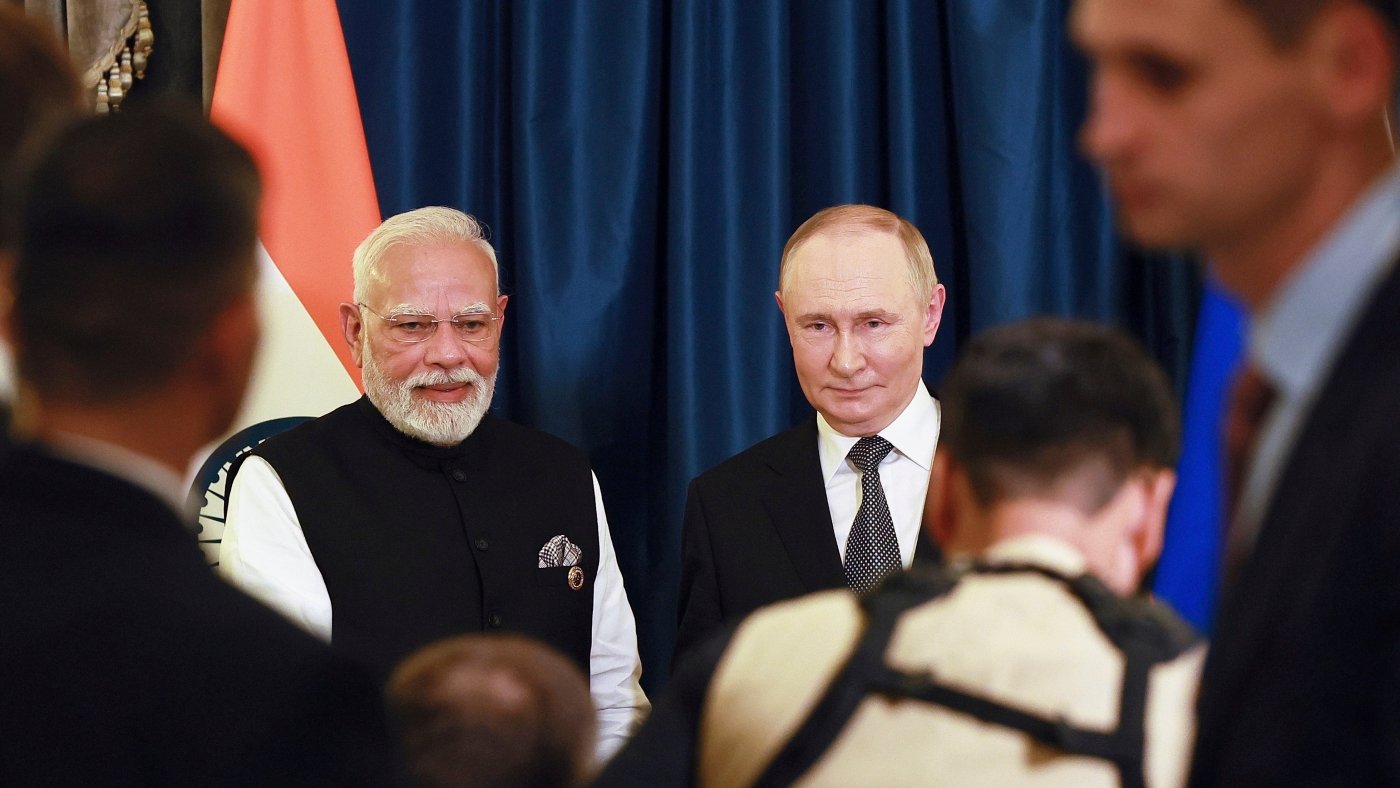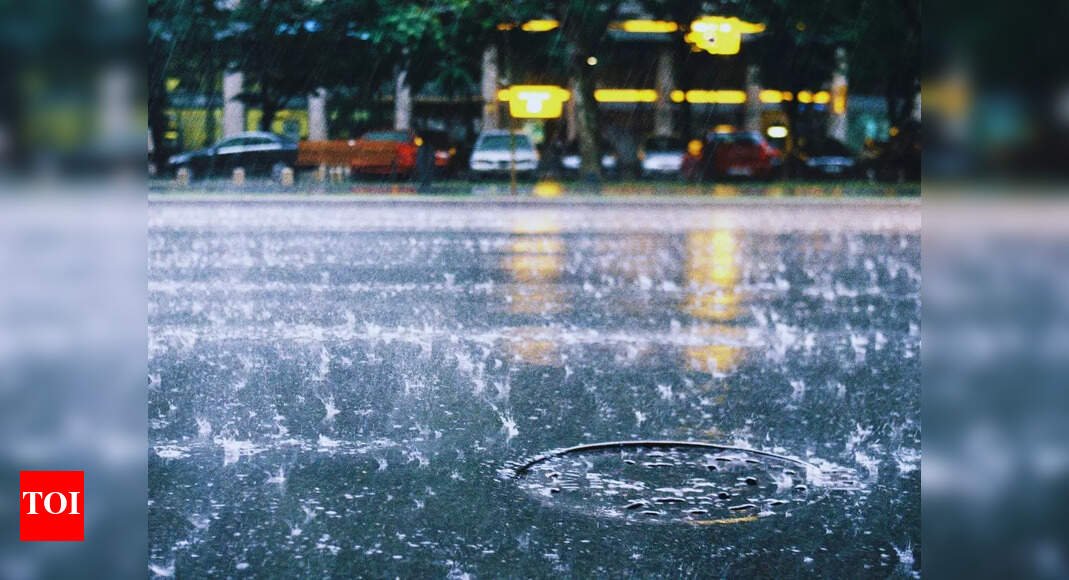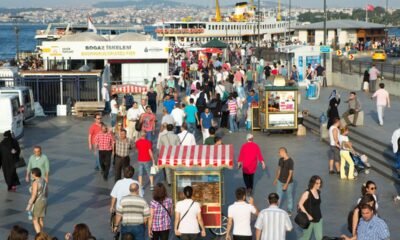Travel Guides & Articles
India Crosses 32 Lakh Foreign Tourist Arrivals in Just Four Months of 2025, With Rajasthan, Kerala, Goa, Tamil Nadu, and Delhi Emerging as Leading International Travel Destination

Published on
August 18, 2025
India’s tourism sector has recorded another major milestone in 2025. During the first four months of the year, 32.41 lakh foreign tourists visited the country, reaffirming India’s place among the fastest-growing destinations in Asia. The influx of visitors has not only strengthened India’s cultural diplomacy but also significantly boosted the nation’s economy.
From the majestic forts and palaces of Rajasthan, the bustling cosmopolitan cities of Delhi and Mumbai, to the idyllic beaches of Goa, the tranquil backwaters of Kerala, and the ancient temple towns of Tamil Nadu, India continues to attract diverse groups of travelers. Whether visitors are seeking history, spirituality, adventure, or wellness, the country’s rich tapestry of experiences remains unparalleled.
The Ministry of Tourism has highlighted that this growth is part of a steady trajectory that has been building since 2022. Equally significant are the Foreign Exchange Earnings (FEEs), which reached INR 98,289 crore between January and April 2025 alone. This reflects tourism’s rising role in India’s financial framework, supporting infrastructure projects, generating employment, and contributing directly to GDP growth.
Strategic programs such as Swadesh Darshan 2.0, PRASHAD, and the Special Assistance to States for Capital Investment (SASCI) Scheme are playing crucial roles in shaping India into a global tourism hub. These initiatives are fostering sustainable tourism, developing iconic destinations, and ensuring that both traditional and emerging circuits gain international recognition.
This detailed tourism report delves into the numbers, analyzes the impact on India’s economy, explores government initiatives, and discusses the challenges and opportunities ahead. It highlights how India is positioning itself as a global tourism powerhouse capable of competing with established destinations while retaining its unique cultural identity.
1. Foreign Tourist Arrivals (FTAs) – Rising Year After Year
India’s Foreign Tourist Arrivals (FTAs) have shown remarkable resilience and growth:
- 2022: 64.37 lakh arrivals
- 2023: 95.21 lakh arrivals, marking nearly 48% growth
- 2024: 99.52 lakh arrivals, consolidating the upward trend
- 2025 (Jan–Apr): 32.41 lakh arrivals already recorded
This surge demonstrates strong confidence among international travelers. Tourists are returning not only to established hubs like Delhi, Jaipur, and Mumbai, but also exploring lesser-known destinations in Northeast India, Madhya Pradesh, and coastal Odisha.
The growth is fueled by increasing air connectivity, improved e-visa facilities, and India’s rising profile as a destination for spiritual tourism, wellness retreats, adventure experiences, and cultural exploration.
2. Foreign Exchange Earnings – Fueling India’s Economy
Tourism has become a vital contributor to India’s foreign revenue. The figures tell a compelling story:
- 2022: INR 1,69,917 crore
- 2023: INR 2,66,045 crore
- 2024: INR 2,93,033 crore
- 2025 (Jan–Apr): INR 98,289 crore (provisional)
The 73% growth in FEEs between 2022 and 2024 underscores how tourism is now central to India’s financial ecosystem. The earnings provide critical funding for national projects, infrastructure upgrades, and conservation of heritage sites.
Tourism-generated foreign exchange also supports India’s hospitality industry, which employs millions across hotels, airlines, travel agencies, and local businesses from Kerala’s houseboat operators to Rajasthan’s desert camps.
3. Tourism’s Expanding Role in India’s GDP
Tourism is no longer a supplementary industry—it has become a cornerstone of the Indian economy. The sector’s contribution to GDP has steadily grown:
- 2021–22: 1.75% of GDP
- 2022–23: 5.09% of GDP
- 2023–24: 5.22% of GDP
This rise illustrates how tourism is driving wider economic growth. Tourism creates ripple effects across aviation, retail, local crafts, transport, and food services. As the sector expands, it plays a greater role in rural development by bringing travelers to villages and remote circuits, thereby balancing regional growth.
4. Strategic Tourism Initiatives Shaping Growth
The government has launched multiple initiatives to create world-class tourism infrastructure and experiences:
- Swadesh Darshan 2.0 – redesigned as a destination-centric and sustainable program, focusing on eco-tourism, heritage trails, and community-based tourism.
- PRASHAD Scheme – enhancing spiritual and religious tourism by modernizing pilgrimage sites such as Varanasi, Puri, and Rameswaram.
- Tourism Infrastructure Development – funding for airports, highways, wayfinding systems, and tourist facilities.
- SASCI (Special Assistance to States for Capital Investment) – an allocation of INR 3,295.76 crore across 23 states, supporting 40 projects to upgrade destinations to global standards.
These programs combine central funding with state execution, ensuring both national vision and regional identity are preserved.
5. India’s Tourism Tapestry – Regional Highlights
India’s diversity remains its strongest selling point:
- Rajasthan & Delhi – Majestic forts, palaces, and historic monuments such as Jaipur’s Amber Fort, Delhi’s Red Fort, and Udaipur’s lakeside palaces.
- Goa – Internationally renowned beaches, Portuguese heritage, and a thriving nightlife.
- Kerala – Wellness tourism capital, famous for Ayurveda, houseboats, and backwater cruises.
- Tamil Nadu – Ancient temples, UNESCO World Heritage sites, and vibrant festivals.
- Mumbai – India’s financial capital, Bollywood hub, and gateway for luxury tourism.
- Northeast India – Adventure and eco-tourism circuits in Meghalaya, Assam, and Arunachal Pradesh.
This varied portfolio enables India to cater to luxury travelers, budget explorers, spiritual pilgrims, and wellness seekers alike.
6. Infrastructure & Iconic Tourism Projects
India’s tourism expansion is supported by massive infrastructure investments:
- Modern airports in Delhi, Mumbai, and Bengaluru with expanded international terminals.
- Highway corridors linking heritage circuits such as Delhi–Agra–Jaipur.
- Luxury trains like the Palace on Wheels offering premium heritage experiences.
- Eco-tourism initiatives in wildlife reserves such as Ranthambore, Kaziranga, and Periyar.
- Smart destination management systems for real-time visitor flow monitoring.
These projects are designed to align India with global benchmarks, enhancing competitiveness in Asia’s crowded tourism market.
7. Role of States and Union Territories
Tourism development is decentralized, allowing states and union territories to lead.
- Rajasthan continues to brand itself as India’s royal heritage hub.
- Goa positions itself as the “beach capital of India.”
- Kerala markets itself as “God’s Own Country,” attracting wellness and nature enthusiasts.
- Tamil Nadu emphasizes spiritual circuits with temple tourism.
- Northeastern states are showcasing tribal cultures, waterfalls, and eco-adventure trails.
This cooperative model enables India to showcase multiple identities within one overarching national tourism strategy.
8. Challenges Confronting India’s Tourism Sector
Despite strong growth, key challenges remain:
- Infrastructure gaps in rural and remote regions limit access.
- Environmental concerns, especially overtourism in fragile ecosystems like the Himalayas and Kerala’s backwaters.
- Global competition from Southeast Asian nations with established tourism branding.
- Limited overseas promotion, as India does not maintain dedicated tourism offices abroad.
Overcoming these challenges requires balancing rapid expansion with sustainability and international marketing.
9. Future Outlook – India as a Global Leader
India’s outlook is strongly positive. By continuing its focus on sustainable tourism, medical and wellness services, eco-tourism circuits, and digital connectivity, the country is poised to become a global leader in tourism by 2030.
Future strategies include:
- Expanding medical tourism hubs in Chennai, Delhi, and Kerala.
- Strengthening digital promotion and online booking platforms.
- Building eco-friendly resorts and green tourism infrastructure.
- Expanding international air connectivity to tier-2 tourist destinations.
These steps will help India compete with global leaders like Thailand, Indonesia, and Singapore while offering experiences uniquely rooted in Indian culture and heritage.
Key Takeaways
- 32.41 lakh foreign tourists visited India between January–April 2025.
- INR 98,289 crore earned in Foreign Exchange during the same period.
- Tourism now contributes over 5% of India’s GDP, up from 1.75% in 2021–22.
- Government initiatives like Swadesh Darshan 2.0, PRASHAD, and SASCI are driving expansion.
- India’s diversity—from Rajasthan’s forts to Kerala’s backwaters—continues to draw global visitors.
Travel Guides & Articles
Modi and Putin affirm special relationship as India faces steep US tariffs over Russian oil imports : NPR

Indian Prime Minister Narendra Modi, left, and Russian President Vladimir Putin pose during their meeting on the sidelines of the Shanghai Cooperation Organization (SCO) summit in Tianjin, China, Monday, Sept. 1, 2025.
Vladimir Smirnov/AP/Pool Sputnik Kremlin
hide caption
toggle caption
Vladimir Smirnov/AP/Pool Sputnik Kremlin
TIANJIN, China — Indian Prime Minister Narendra Modi and Russian President Vladimir Putin met on the sidelines of a regional summit in China on Monday in a show of deepening ties when New Delhi’s relations with Washington are strained over the purchase of Russian oil.
The two leaders held talks after attending the key session of the Shanghai Cooperation Organization gathering in the port city of Tianjin, where discussions focused on regional stability, bilateral trade and energy cooperation.
In his remarks to open the talks, Modi termed the partnership with Moscow as “special and privileged.” Putin addressed Modi as a “dear friend” and hailed Russia’s ties with India as special, friendly and trusting.
“Russia and India have maintained special relations for decades. Friendly, trusting. This is the foundation for the development of our relations in the future,” Putin said.
Putin plans to travel to India in December for the 23rd India-Russia annual summit, according to his foreign affairs adviser, Yuri Ushakov.
Relationships on display
Modi used the SCO meeting to welcome the initiatives aimed at halting the conflict between Russia and Ukraine and called on the stakeholders to move forward constructively.
“To end the conflict soonest and establish peace permanently, we need to find out a way. It’s a call of the entire humanity,” Modi said.
Putin was accompanied by a large delegation that included top government officials. Russian state media reported that before sitting down for their formal meeting, Putin and Modi spoke one-on-one for almost an hour in a Russian-made limousine that Putin regularly takes on foreign trips.
Moments before the leaders lined up for a group photo, Modi was seen clasping Putin’s hand with the gusto of an old friend, bursting into his trademark hearty laughter. The moment was infectious as Putin grinned and chuckled, while Chinese President Xi Jinping gave a measured smile. The trio, ringed by watchful interlocuters, chatted animatedly for a few seconds.
Modi met Xi ahead of the opening of the summit Sunday and the two leaders pledged to resolve their border differences and bolster cooperation.
Washington pushing together China, Russia and India
Monday’s bilateral meeting between Modi and Putin carried added significance by coming days after U.S. President Donald Trump imposed an additional 25% tariffs on Indian imports, raising the total duties to a steep 50%, in retaliation for India’s continued purchases of discounted Russian oil.
Washington has repeatedly warned New Delhi against buying Russian crude, which it said was partly keeping Moscow’s revenues afloat to fund the Ukraine war. India has defended its imports as essential for meeting the growing energy needs of its 1.4 billion people.
Analysts said Trump’s steep tariffs and the tone coming from the White House have pushed New Delhi closer to China and Russia.
“While India-China reengagements started much before Trump, his policies are accelerating a process whereby India seems to be working much more closely with China and Russia to push back against economic unilateralism it is witnessing from the U.S.,” said Harsh Pant, vice president of foreign policy at New Delhi based think tank the Observer Research Foundation.
Modi travelled to Russia twice last year. The first was a visit to Moscow for talks with Putin in July, which was his first trip to Russia since the full-scale invasion of Ukraine by the Kremlin’s forces in February 2022. He then traveled to Kazan in October for the summit of the BRICS bloc of developing economies.
Trump’s reaction
As Xi, Putin and Modi showed extraordinary unity, Trump on Monday continued to jab at New Delhi.
As the summit wrapped up, Trump charged in a social media post that historically the U.S.-India trade relationship “has been a totally one sided disaster!” Trump also bristled about India surging its Russian oil purchases and signaled no trade deal with New Delhi is in sight.
“They have now offered to cut their Tariffs to nothing, but it’s getting late,” Trump said in the posting on his Truth Social platform. “They should have done so years ago. Just some simple facts for people to ponder!!!”
SCO nations share a history of business partnerships
Russia has had strong ties with India since the Cold War, and New Delhi’s importance as a key trading partner has grown since the war between Moscow and Ukraine.
China and India have become key buyers of Russian oil after the West shunned Russian exports to punish Moscow.
India historically bought most of its crude from the Middle East, but the world’s third-largest crude importer after China and the U.S. has started buying Russian oil available at discounted rates. Russia now accounts for around 37% of India’s total oil imports, according to analysts and Indian officials.
Trade between India and Russia has sharply increased in recent years, reaching a record $68.7 billion in the 2024-25 financial year. Imports from Russia reached around $64 billion and exports from India totaled about $5 billion, according to Indian government data.
The two nations aspire to bolster trade to $100 billion by 2030.
Modi’s meeting with Putin underscored New Delhi’s stance that India prized its old and reliable strategic partners and has sufficient strategic autonomy in its foreign policy to maintain and strengthen its multi-dimensional partnership, said Sreeram Sundar Chaulia, an international affairs expert at New Delhi’s Jindal School of International Affairs.
At the same time, the Indian government hopes the present rough weather between India and the U.S. is a temporary aberration, Chaulia said.
“Then, India can return happily to having the Russian cake and eating the American pie as part of its multi-alignment strategy,” Chaulia said.
Travel Guides & Articles
Fatehpur Sikri, India, travel guide: Seven highlights to see

Seven wonders within Fatehpur Sikri, India
This monumental Mughal capital 37 kilometres outside Agra was founded in 1571 but lasted scant decades. The magnificently mournful ruins are one of India’s most underrated sights.
1 Make a grand entrance through Victory Gateway
As you lurch out of Agra, dodging cars and camel carts, your first sight of this ruined city is an immense hilltop gateway, one of the world’s biggest, wobbling like a mirage in the heat. Victory Gateway was built in 1602 from red sandstone and white marble to commemorate Emperor Akbar’s military triumphs, although its Persian inscription warns the world doesn’t last. This by itself qualifies as a mighty monument, and the views are splendid.
2 Pause in admiration inside the mosque
Step through the gateway into the courtyard of the Friday Mosque and you get the first impact of this tremendous ensemble. Everything is built of red sandstone, everything outsized, and yet the decorative detail – window frames, balconies, roof brackets – wonderfully carved. The mosque is one of India’s finest and largest and centres on the tomb of a Sufi, inlaid with mother-of-pearl. Local women come to tie strings on the marble lattice in hope of being granted children.
3 Check out the architecture in the Audience Hall
This gloriously startling building in the royal quarter is where Akbar consulted advisers. The Diwan-i-Khas has wall recesses that served as bookshelves for royal documents and texts. However, your eyes will surely be on the enormous and wildly ornate octagonal pillar of the main hall, which rises from the centre of the room like the handle of an umbrella and props up an elevated walkway that resembles the balcony in an opera house.
4 Look up in the Imperial Treasury
Fatehpur Sikri shows wide Hindu, Islamic and Persian influences but this genius building next to the Audience Hall takes inspiration from Jain temple architecture and decorative sculpture. Stone safes are concealed in the walls, but gaze up: the brackets that hold up the ceiling are embellished with mythical elephant-headed sea monsters, said to guard treasures in the depths of the ocean. In the fields behind, don’t miss the odd-looking spiky tower erected in memory of Akbar’s beloved elephant Hiran.
5 Enjoy the faded frescoes in Mariam’s House
The harem complex has several fine pavilions, some showing Turkish influences and others covered with depictions of swans and horses. The carvings and fretwork are so fine in places you could mistake sandstone for wood. If you’re pressed for time, head straight to Mariam’s House, perhaps the best example. As a bonus, it has bright and sometimes surreal gold-tinted frescoes – look out for the diaphanous woman riding a gigantic parrot.
6 Wander through the other imperial quarters
This is the most impressive part of Fatehpur Sikri, erupting in columns, latticed screens and elaborately decorated architectural elements, and graced with ornamental pools and clipped gardens. Persian verses loop across the emperor’s bedroom or House of Dreams, although judging from his innumerable concubines Akbar spent scant time on sleep. The pool below the elevated kiosk cooled the bedchamber. This is just one of numerous buildings that might take an hour or two to admire.
7 Close your guidebook and get lost
Fatehpur Sikri was planned in the smallest detail: servants’ quarters, lavatory blocks, fountain drainage, masonry rings to hold silk canopies for courtyard shading. Take time to inspect the detail and soak up the melancholy magnificence away from the main visitor axis. Birds wheel overhead and squirrels sun themselves on walls. In the late afternoon the sandstone turns crimson, then orange and subtle pink before the light fades on this abandoned city of lost dreams.
The writer travelled as a guest of Incredible India incredibleindia.gov.in and Malaysia Airlines malaysiaairlines.com
Sign up for the Traveller Deals newsletter
Get exclusive travel deals delivered straight to your inbox. Sign up now.
Traveller Guides
From our partners
Travel Guides & Articles
Heavy rain alert in Delhi–Gurugram: IMD issues an orange alert; travel and safety advisory |

In a recent update, Delhi and its surrounding NCR cities, including Gurugram, Noida, and Faridabad, have received intense rainfall. The India Meteorological Department (IMD) has issued an orange alert for Delhi while a warning of very heavy rainfall and thunderstorms has been issued for Gurugram.Keeping the current situation in view, the District Disaster Management Authority has issued a travel advisory for Gurugram for 2nd September 2025. It reads:On September 1, 2025, Gurugram recorded over 100 mm of rainfall between 3 PM and 7 PM. The India Meteorological Department (IMD) has issued an Orange Alert, forecasting heavy to very heavy rainfall on September 2, 2025.In light of this warning:Corporate offices and private institutions in Gurugram district are advised to ask employees to work from home.
All schools in the district are directed to conduct online classes on September 2, 2025.On the other hand, Delhi too is experiencing non-stop rains which have caused waterlogging and long traffic across roads. Authorities are closely monitoring the Yamuna River too, which is expected to rise close to the danger mark of 206 metres on Tuesday. Low-lying areas are particularly vulnerable to flooding.India Meteorological Department forecastIn the present scenario, the India Meteorological Department (IMD) has issued an orange alert for Delhi for heavy rainfall. Similar alerts have been issued for NCR regions including Noida, Faridabad, and Gurugram. A yellow warning has been issued for Ghaziabad.Not only this, IMD has cautioned that northern India may experience heavy rainfall at least until September 5 especially for Uttarakhand, Himachal Pradesh, and Punjab which are under red and orange alerts.Travel disrupted, airlines issue advisoryAirlines such as IndiGo, Air India, SpiceJet, and Akasa too have issued warnings and advised people of possible delays and cancellations due to poor visibility. Passengers are advised to check flight status before leaving the house.Advisory
It is advised to avoid flood-prone zones, underpasses, and Yamuna ghats.Use public transport.For those in Gurugram, work from home is strongly recommended on September 2 as safety of people is more important.Keep a check on official IMD and local weather updates before planning anything.
-

 Business3 days ago
Business3 days agoThe Guardian view on Trump and the Fed: independence is no substitute for accountability | Editorial
-
Tools & Platforms3 weeks ago
Building Trust in Military AI Starts with Opening the Black Box – War on the Rocks
-

 Ethics & Policy1 month ago
Ethics & Policy1 month agoSDAIA Supports Saudi Arabia’s Leadership in Shaping Global AI Ethics, Policy, and Research – وكالة الأنباء السعودية
-

 Events & Conferences3 months ago
Events & Conferences3 months agoJourney to 1000 models: Scaling Instagram’s recommendation system
-

 Jobs & Careers2 months ago
Jobs & Careers2 months agoMumbai-based Perplexity Alternative Has 60k+ Users Without Funding
-

 Funding & Business2 months ago
Funding & Business2 months agoKayak and Expedia race to build AI travel agents that turn social posts into itineraries
-

 Education2 months ago
Education2 months agoVEX Robotics launches AI-powered classroom robotics system
-

 Podcasts & Talks2 months ago
Podcasts & Talks2 months agoHappy 4th of July! 🎆 Made with Veo 3 in Gemini
-

 Podcasts & Talks2 months ago
Podcasts & Talks2 months agoOpenAI 🤝 @teamganassi
-

 Mergers & Acquisitions2 months ago
Mergers & Acquisitions2 months agoDonald Trump suggests US government review subsidies to Elon Musk’s companies





















